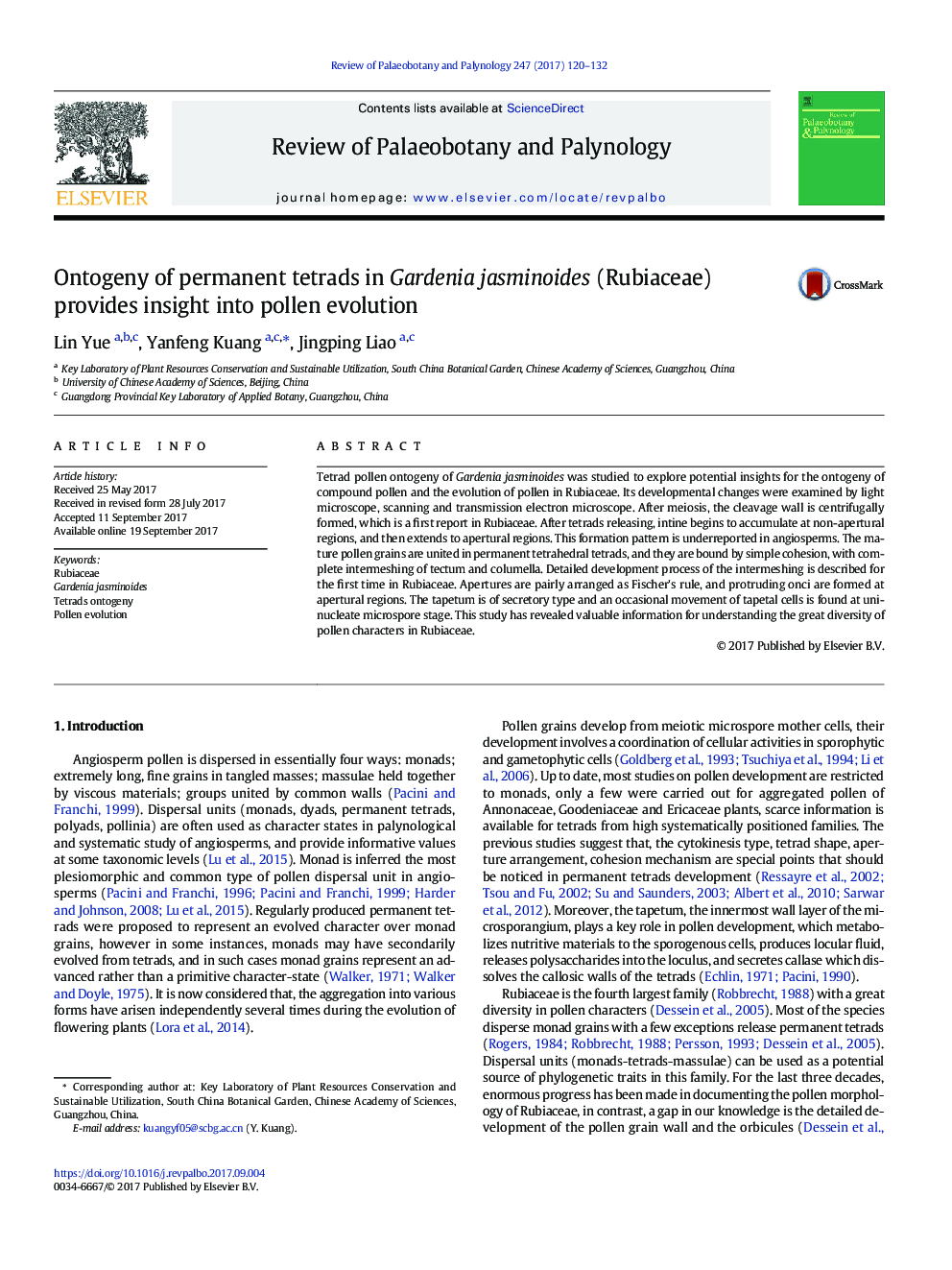| Article ID | Journal | Published Year | Pages | File Type |
|---|---|---|---|---|
| 5788299 | Review of Palaeobotany and Palynology | 2017 | 13 Pages |
â¢The permanent tetrad ontogeny was studied cytologically and histologically.â¢Centrifugal cleavage wall formation was discovered in Rubiaceae.â¢Pollen grains united by simple cohesion mechanism were described firstly in the family.â¢An underreported intine formation pattern was observed.
Tetrad pollen ontogeny of Gardenia jasminoides was studied to explore potential insights for the ontogeny of compound pollen and the evolution of pollen in Rubiaceae. Its developmental changes were examined by light microscope, scanning and transmission electron microscope. After meiosis, the cleavage wall is centrifugally formed, which is a first report in Rubiaceae. After tetrads releasing, intine begins to accumulate at non-apertural regions, and then extends to apertural regions. This formation pattern is underreported in angiosperms. The mature pollen grains are united in permanent tetrahedral tetrads, and they are bound by simple cohesion, with complete intermeshing of tectum and columella. Detailed development process of the intermeshing is described for the first time in Rubiaceae. Apertures are pairly arranged as Fischer's rule, and protruding onci are formed at apertural regions. The tapetum is of secretory type and an occasional movement of tapetal cells is found at uninucleate microspore stage. This study has revealed valuable information for understanding the great diversity of pollen characters in Rubiaceae.
